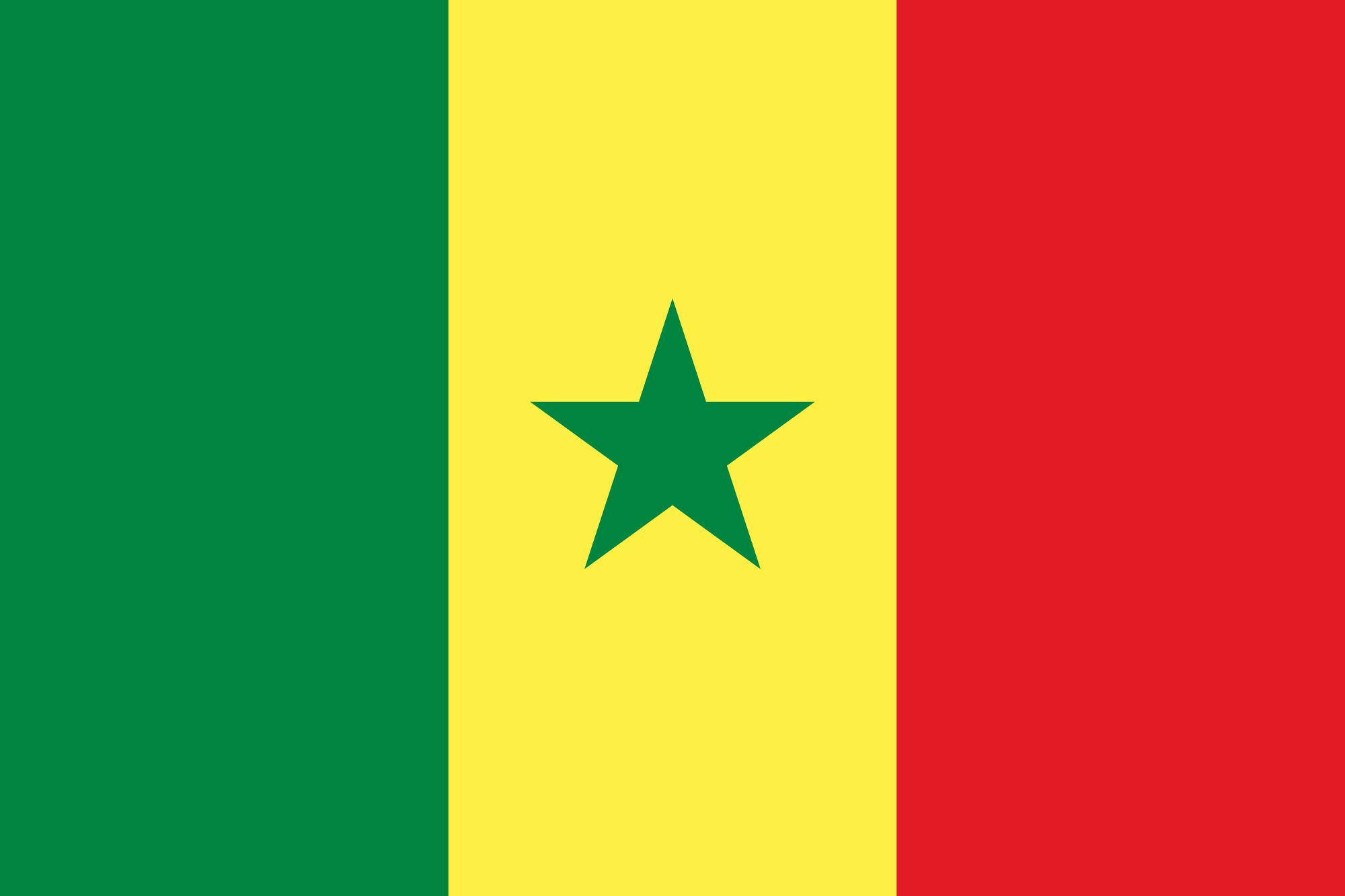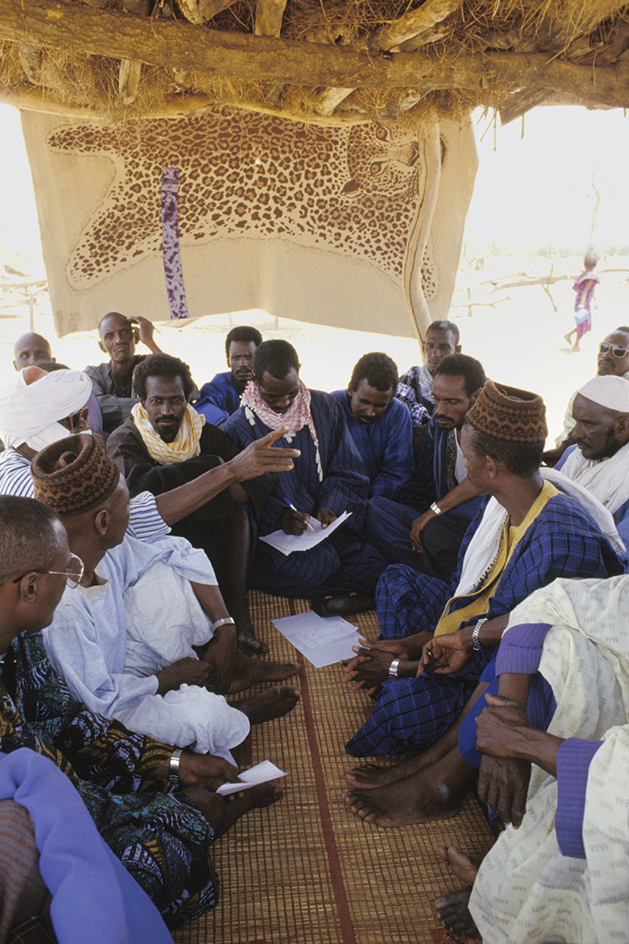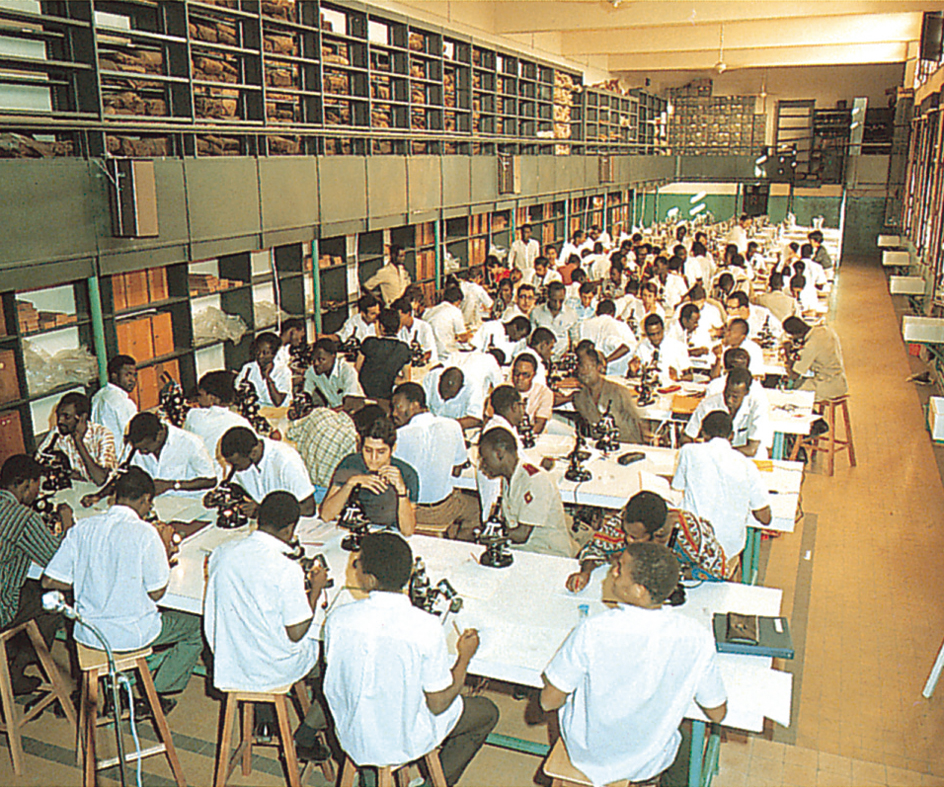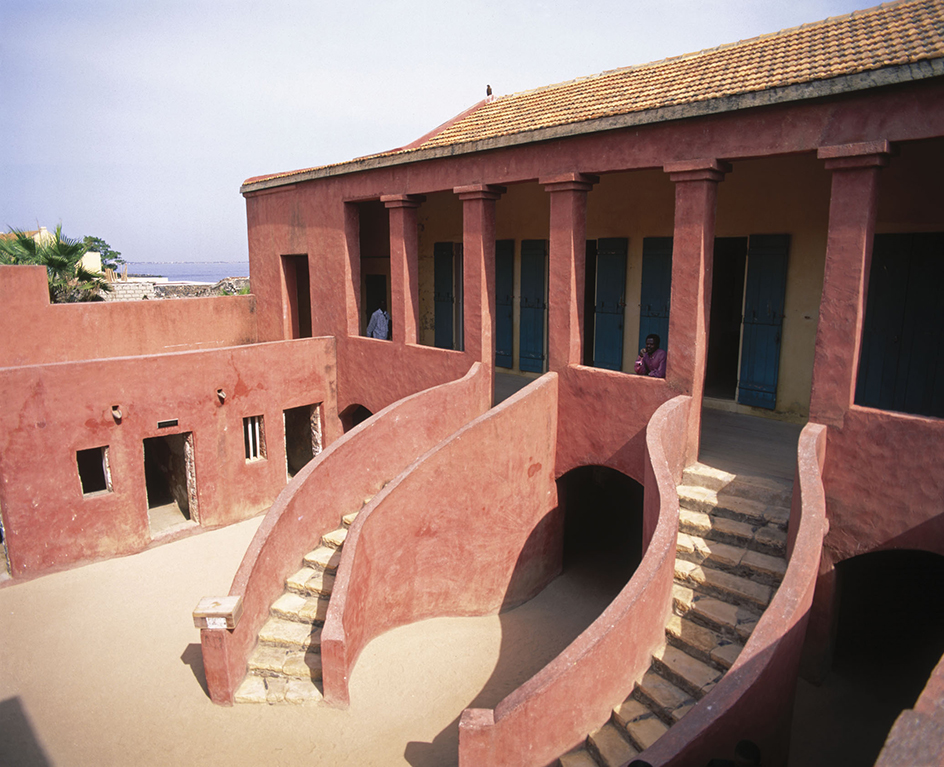Senegal << `SEHN` uh GAWL >> is a small country on Africa’s northwestern coast. It is at the tip of the bulge of northern Africa jutting west toward the Atlantic Ocean. It is farther west than any other African mainland nation.

Rolling plains cover most of Senegal. The tiny nation of Gambia divides the southern part of Senegal, called the Casamance, from the larger northern part. Dakar is the country’s capital, largest city, and commercial center.
Senegal became an independent nation in 1960. It had been ruled by France since the late 1800’s.
Government.
Senegal is a republic. The president is the most powerful official. The president is elected by the people to a five-year term and can be reelected only once. The president appoints a prime minister.
Senegal’s parliament is known as the National Assembly. Members are elected by the people to five-year terms.
All citizens 18 years old and older may vote. Senegal has a number of political parties, including the Socialist Party of Senegal and the Senegalese Democratic Party. The Socialist Party controlled the Senegalese government from the time the country became independent in 1960 until 2000.

People.
Senegal’s people belong to many different ethnic groups. The largest ones are, in order of size, the Wolof, Fulani, Serer, Diola, and Mandinka. Each group has its own customs and language. Senegal also has a large immigrant population made up of people from other African countries and from France and Lebanon. French is Senegal’s official language, but Wolof is the most widely spoken language in the country.
Loading the player...Senegalese contemporary music
About 95 percent of Senegal’s people are Muslims. The rest are either Christians or people who practice traditional African religions. Most Senegalese Muslims belong to Islamic religious groups called brotherhoods. The two largest groups are the Muridiyya (or Mouride) brotherhood and the Tidjaniyya brotherhood. Brotherhoods are led by Muslim religious leaders called marabouts. Marabouts are important in Senegalese politics because they can influence the way their followers vote.

Most of the rural houses in Senegal are mud huts with thatched or tin roofs. In many cases, related families live together in a compound (cluster of houses) surrounded by a wall or fence. In the cities, middle-class people live in modern apartments or houses. Most poor live in dwellings made of concrete.
Many Senegalese men wear wide-legged trousers and a loose-fitting cotton robe called a boubou. The women wear brightly colored boubous, jewelry, and fancy turbans. Tiebou dienn (rice and fish) is widely considered to be Senegal’s national dish. Other popular dishes include mate (chicken or meat in peanut sauce) and yassa (chicken and onions in lemon marinade).
Senegal faces severe health problems. Water and food contaminated by parasites and other impurities are a major cause of illness and death in the country, especially in the rural areas. Senegal has a severe shortage of physicians.
About half of Senegal’s adult population can read and write. Children are required by law to complete six years of schooling, but the law is not enforced.
About 55 percent of Senegal’s children attend elementary school, and 10 percent go to high school. Relatively few Senegalese attend college. Cheikh Anta Diop University, in Dakar, is Senegal’s largest university.

The Senegalese are known for their accomplishments in literature and the arts. Noted Senegalese include the poet Léopold Sédar Senghor, who also served as Senegal’s president from 1960 to 1981; the film director and author Sembene Ousmane; and the musicians Youssou N’Dour and Baaba Maal. The noted intellectual and archaeologist Cheikh Anta Diop was also Senegalese.
Land and climate.
Sandy beaches cover Senegal’s coast, which extends about 310 miles (500 kilometers) along the Atlantic Ocean. High sand dunes rise along the northern part of the coast. Dakar lies along the coast, on a peninsula called Cap Vert. Inland, Senegal’s terrain consists mainly of gently rolling plains covered with reddish sand. The foothills of the Fouta Djallon mountain range rise in the southeast, near Senegal’s border with Guinea.
Forests cover the Casamance region in southern Senegal. Farther north, the amount of plant life gradually decreases. Much of Senegal’s wildlife has been eliminated by hunting and by the use of land for housing and other development. However, antelope, crocodiles, chimpanzees, elephants, and other kinds of wildlife still live in the eastern and southern parts of the country. Senegal has three major rivers—the Senegal in the north, the Gambia in the southeast, and the Casamance in the southwest.
Senegal has a rainy season that lasts from July to October and a dry season that lasts from November to June. The greatest amount of rainfall occurs in the Casamance, which receives about 60 to 70 inches (150 to 180 centimeters) annually. The amount of rainfall gradually decreases farther north, averaging less than 20 inches (50 centimeters) near the Senegal River. The average annual temperature along Senegal’s coast is about 71 °F (22 °C). Inland, the average annual temperature is about 84 °F (29 °C).
Economy.
Senegal is a poor nation, and many of its people live in poverty. Foreign aid and remittances (money sent home) from Senegalese people working abroad are helpful sources of national income.
Most of Senegal’s people work in agriculture. Senegalese farmers raise cassava, millet, rice, vegetables, and other crops for their own use. Peanuts, the country’s leading crop, are an important source of income. Farmers raise beef and dairy cattle, chickens, goats, hogs, and sheep. 
Important manufacturing activities include the processing of agricultural products and fish and the refining of imported petroleum. Senegal also manufactures construction materials. Phosphates from lime deposits are Senegal’s chief mineral products.
Senegal imports more than it exports. Major imports include machinery, petroleum products, and rice. The country imports all of its petroleum and coal. Fish, petroleum products, and phosphates rank among Senegal’s leading exports. France has been Senegal’s main trading partner since the 1800’s. But trade with other countries in Africa and elsewhere is growing.
Senegal has an extensive network of roads. Dakar has an international airport and a busy seaport. Several newspapers and magazines are published in Senegal. The country has both state-owned and privately owned radio and television stations.
History.
The area that is now Senegal has probably been inhabited since prehistoric times. The ancient West African empires of Ghana, Mali, and Songhai controlled eastern parts of the area from the A.D. 300’s through the 1500’s. Between the 1000’s and 1300’s, independent kingdoms arose in Senegal, including the Tekrur kingdom in the north and the Serer and Wolof kingdoms near the central region.

In the mid-1400’s, Portuguese sailors encountered the mouths of the Senegal, Gambia, and Casamance rivers. They sailed into the interior of Senegal and began trading with the people there. England, France, and the Netherlands took over the trade from the Portuguese during the 1500’s. By the mid-1600’s, the Europeans had established trading posts along the coast. The Europeans bought enslaved African people along the coast. They traded such goods as alcohol, cloth, jewelry, iron bars, and weapons for gold, ivory, millet, ostrich feathers, and other goods. The Europeans introduced peanuts into the area.

England, France, and the Netherlands fought one another for possession of the trading posts. The Netherlands lost its posts in the late 1600’s. In 1817, the English turned over their last possessions in Senegal to the French. During the mid-1800’s, French troops conquered the independent kingdoms in the interior of what is now Senegal. In 1882, France made Senegal a French colony with four administrative districts. In 1895, the colony became part of a large federation of French territories called French West Africa. Dakar became the federation’s capital.
The period of French rule resulted in many changes in Senegal. For example, marabouts (Muslim religious leaders) replaced tribal chiefs as landlords and political leaders. The chiefs had lost much of their authority after France conquered their kingdoms. In addition, the French encouraged the Senegalese to increase the production of peanuts for export to make the colony economically self-sufficient. The French also established many schools in Senegal.
Many Senegalese began demanding independence during the mid-1900’s. Senegal gained control of its internal political affairs in 1956. In 1959, the country joined the French Sudan (now Mali) to form the Federation of Mali. The federation gained independence from France on June 20, 1960. On Aug. 20, 1960, Senegal withdrew from the federation and became the Republic of Senegal. Léopold Sédar Senghor, the founder of the Socialist Party of Senegal, became the country’s president.

In 1962, Prime Minister Mamadou Dia was arrested for trying to overthrow President Senghor. The prime minister and others were tried and convicted. They were imprisoned from 1963 to 1974. In 1963, Senegal adopted a new constitution that eliminated the office of prime minister. However, in 1970, the people voted to restore the office. Severe droughts during the late 1960’s and the 1970’s seriously damaged Senegal’s economy. The droughts caused widespread food shortages and other problems.
In 1981, Senghor resigned as president. Prime Minister Abdou Diouf succeeded him.
In 1982, Gambia and Senegal formed a confederation called Senegambia. The confederation strengthened the economic ties between the two countries and united their armed forces. However, disputes between Gambia and Senegal led them to end the confederation in 1989.
From the early 1980’s to the early 2000’s, fighting sometimes broke out in the southern region of Casamance between government forces and rebels of the Movement of Democratic Forces of Casamance (MFDC). Members of this movement supported independence for Casamance. Thousands of people died in the fighting. At the end of 2004, the government and the rebels signed a peace deal.
Since independence, Senegal has maintained close relations with France and has had a pro-Western foreign policy. France gives Senegal much economic aid.
Senegal held elections for president in 2000. Abdoulaye Wade, leader of the Senegalese Democratic Party and the candidate of a coalition of opposition parties called the Alternance Front, defeated Diouf, the Socialist Party candidate. In January 2001, the nation adopted a new constitution. In February 2007, voters reelected Wade as president.
In 2010, Senegal’s government unveiled a statue to celebrate the country’s 50th anniversary. The 160-foot (49-meter) statue of a man, woman, and child is called the Monument of African Renaissance. It stands on a hill overlooking Dakar.
In 2012, former prime minister Macky Sall defeated Wade in presidential elections. Voters reelected Sall to a second term as president in Feburary 2019. In May, Sall abolished the post of prime minister, after Senegal’s parliament had approved this change. In September 2022, Sall appointed Amadou Ba as prime minister, reestablishing the post.
In February 2024, President Sall announced that Senegal’s presidential election, scheduled for that month, would be postponed indefinitely. The parliament then scheduled the election for December 2024. Later in February, the postponement was overturned by Senegal’s Constitutional Council. The election took place in March 2024. Opposition leader Bassirou Diomaye Faye was elected president.
